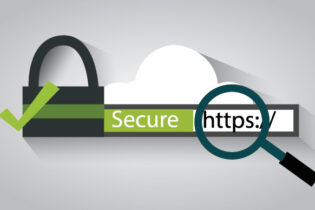
Choosing an SSL certificate for your website is not a decision you should take lightly. The proper cert will ensure sensitive data protection and identity verification for your custom website needs. And, since the commercial SSL validity is one year, you don’t want to select the wrong option.
To make things even trickier, different Certificate Authorities offer similar products in price and features. An eloquent example of users’ struggles to distinguish one certificate from another is Sectigo’s PositiveSSL Wildcard vs EssentialSSL Wildcard certificates. Both are one of the most popular solutions to secure one domain and unlimited subdomains, but what sets them apart? This article provides the ultimate comparison.
PositiveSSL Wildcard Features
PositiveSSL Wildcard offers quick and robust protection at an affordable price. Whether you have a personal site, a blog, an online portfolio, or a small business, this wildcard certificate will meet all your encryption needs while delivering enhancing features.
You can get this certificate in just five minutes without any tedious paperwork. The validation process is automated, focusing solely on domain ownership verification.
Say goodbye to the complexities of securing individual subdomains as PositiveSSL Wildcard encrypts not only your main domain but also an infinite number of subdomains with a single installation. This saves you time and effort but also future-proofs your security strategy. Regardless of how many subdomains you may add, your existing ones remain steadfastly protected.
Positive SSL Wildcard features unbreakable encryption, a static site seal to boost user trust and a $10,000 SSL warranty against potential data breaches or fraudulent issuance. With a compatibility rate of 99.9%, including older versions, this certificate ensures the safety of all your visitors. You can freely deploy this certificate across multiple servers and obtain unlimited reissues at no additional cost until the expiration date.
EssentialSSL Wildcard Features
EssentialSSL Wildcard is another cheap Wildcard SSL solution for securing your domain and its subdomains. It is perfect for small businesses and basic websites, offering a seamless setup process that is quick and hassle-free. Packed with numerous benefits, EssentialSSL Wildcard provides excellent value for money.
Similarly to Positive SSL Wildcard, you’ll receive the installation files promptly via email after you pass an automated domain control verification. And, of course, there’s no need to buy separate certificates to secure your subdomains when this product allows you to protect unlimited subdomains.
It ensures high recognition across various servers and email clients. With SSL padlock support for 99.3% of browsers, including new and legacy versions, visitors will seamlessly connect to your server and have their sensitive data encrypted while in transit.
Sectigo EssentialSSL Wildcard provides a $10,000 warranty against data breaches and a static site seal to bolster client confidence in your services. You can install the certificate on as many servers as needed at no additional cost and conveniently reissue it whenever necessary.
Difference Between PositiveSSL Wildcard vs EssentialSSL Wildcard
The similarities between them have left many people wondering, what’s the catch? But, surprisingly, there isn’t any. The only aspect that differentiates the two is the branded name and price. PositiveSSL Wildcard is part of Sectigo’s (formerly Comodo) “PositiveSSL” product range that boasts the cheapest products on the SSL market and thus is cheaper than EssentialSSL Wildcard.
Sectigo’s branding policy dictates the difference in price between the PositiveSSL Wildcard and Essential SSL Wildcard certificates. And while PositiveSSL Wildcard is cheaper, more SSL Dragon customers prefer Essential Wildcard when it comes to securing their website.
Other specifications are identical and fall in line with industry cryptographic standards and validation procedures. See the table below for a complete comparison:
| Specifications | PositiveSSL Wildcard | EssentialSSL Wildcard |
| Brand | Sectigo (formerly Comodo) | Sectigo (formerly Comodo) |
| Website Type | Personal, Blog, Portfolio, Small Business | Personal, Blogs, Portfolios, Small Business |
| Validation | Domain Validation (DV) SSL | Domain Validation (DV) |
| Secures | One Domain & All Subdomains | One Domain & All Subdomains |
| Issue Time | 5 minutes | 5 minutes |
| Server Licensing | Unlimited | Unlimited |
| With / Without “www” | Yes | Yes |
| Browser Compatibility | 99.9% | 99.9% |
| Paperwork | No | No |
| SAN Support | No | No |
| Secure Hash Algorithm | SHA-2 | SHA-2 |
| Key Encryption | 2048 bit | 2048 bit |
| Certificate Encryption | Up to 256-bit | Up to 256-bit |
| Site Seal | Static | Static |
| Warranty | $10,000 | $10,000 |
| Price | $56.33 per year (on a 3 years plan) | $68.66 per year (on a 3 years plan) |
Bottom Line – Which Certificate to Choose?
Since both certs offer the same encryption strength and identical extra features, it comes down to price. PositiveSSL Wildcard is slightly cheaper, so you may go with this option. Indeed why spend more when you get the same benefits in return? However, not all users think this way.
Many prefer the more expensive option because it’s a tier above the budget Positive SSL line and thus looks more professional and trustworthy.
And while this is solely a perception matter, some believe it gives them a slight edge over the competition. Ultimately, both certificates are excellent entry-level solutions for securing subdomains, and this concludes our PositiveSSL Wildcard vs EssentialSSL wildcard comparison.
Save 10% on SSL Certificates when ordering today!
Fast issuance, strong encryption, 99.99% browser trust, dedicated support, and 25-day money-back guarantee. Coupon code: SAVE10


























